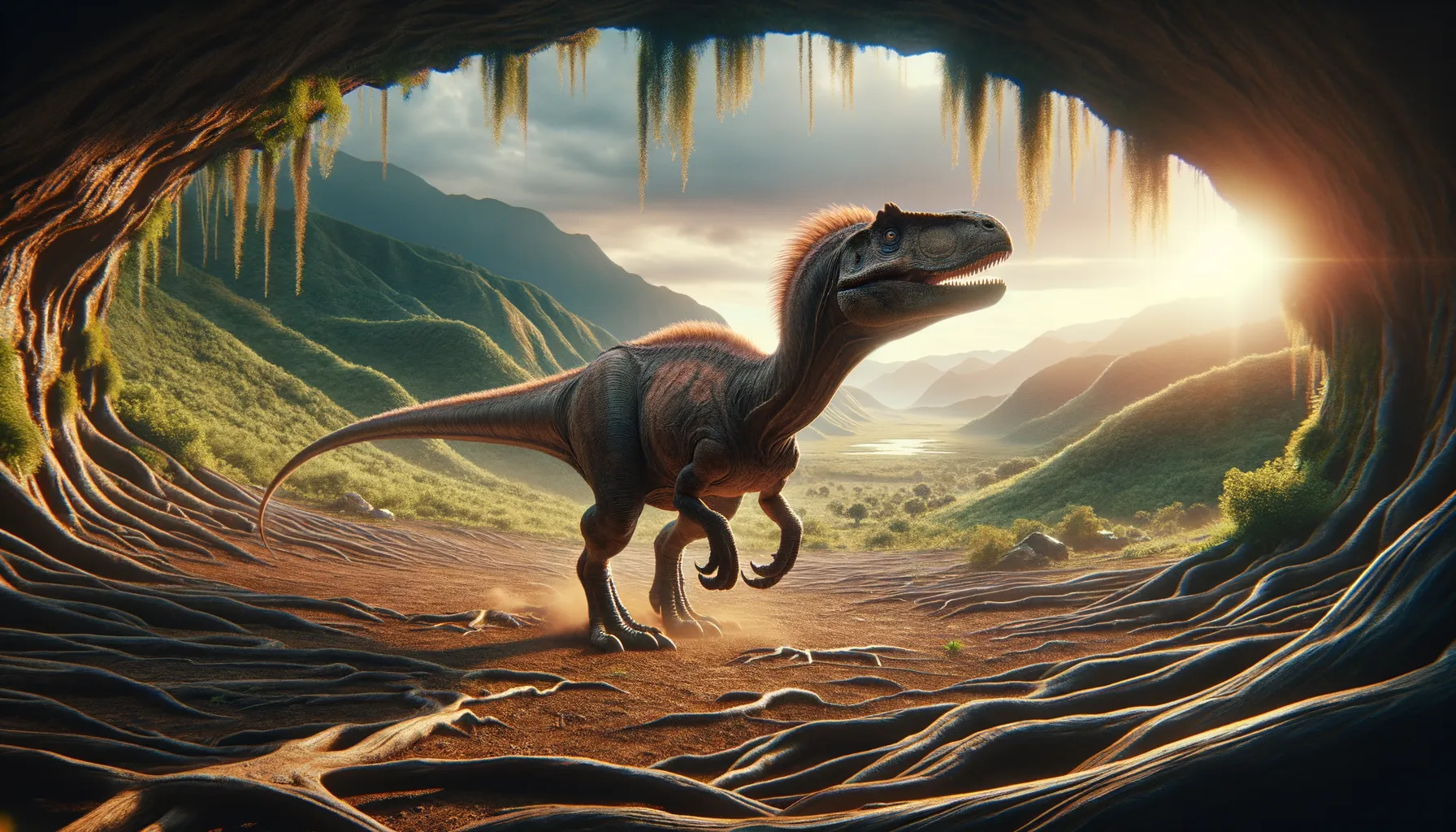
Cryptosaurus
Mysterious denizen of the Jurassic world.
Period
Jurassic
Length
About 8 feet long from head to tail.
Height
Stood around 3 feet tall at the hips.
Weight
Approximately 200 kilograms.
Cryptosaurus was a small, plant-eating dinosaur that roamed the ancient landscapes of what is now Europe during the Jurassic period. Its body was built for a herbivorous lifestyle, moving slowly across its environment, possibly in small groups. Despite its relatively obscure fossil record, Cryptosaurus provides insight into the diversity of dinosaur life during its era.
Diet
Cryptosaurus primarily fed on plants. Its diet likely consisted of ferns, cycads, and other low-lying vegetation available during the Jurassic period.
Hunting
Being a herbivore, Cryptosaurus did not hunt. Instead, it foraged for plants and browsed vegetation while possibly moving in herds for protection.
Environmental challenges
Cryptosaurus faced challenges such as changes in climate that could affect vegetation. Predators were another significant concern, as larger carnivorous dinosaurs roamed the same areas. Limited fossil evidence suggests it may have had to adapt to varying terrain types, from forested regions to open plains, requiring a versatile diet. Survival often depended on the availability of nourishing plant material, which could be scarce at times.
Speed
Cryptosaurus was likely not very fast, moving at a moderate pace suitable for browsing vegetation.
Lifespan
Estimated to have lived for several decades.
First discovery
Discovered in 1869 within a Jurassic rock formation in England.
Fun Facts
- Cryptosaurus was named in 1869 by a British scientist named Harry Seeley.
- The name 'Cryptosaurus' means 'hidden lizard' because its remains were originally very incomplete.
- Cryptosaurus lived during the Late Jurassic period, about 150 million years ago.
- It is believed to be a herbivorous dinosaur, meaning it likely fed on plants.
- The fossils of Cryptosaurus were discovered in England.
- Because of its incomplete fossils, there's a lot we still don't know about Cryptosaurus.
- Cryptosaurus might have been related to Iguanodon, another well-known herbivorous dinosaur from the same era.
Growth and Development
Cryptosaurus experienced typical dinosaur growth, starting as a small hatchling and gradually increasing in size. Its development involved growing hardened skeletal structures to support its herbivorous lifestyle. Juveniles might have grown more rapidly to avoid predation. As they aged, these dinosaurs developed more pronounced physical features conducive to foraging.
Habitat
Cryptosaurus lived in what is now Europe, in a variety of environments. It inhabited forested regions where it could browse leafy plants and open plains for foraging. Tree cover provided some protection from predators. Seasonal changes would have influenced its habitat usage, with migrations possible to find food and safety.
Interaction with other species
Cryptosaurus likely coexisted with a range of other herbivorous dinosaurs, possibly forming mixed-species herds for protection. It also shared its habitat with various carnivorous dinosaurs, which posed a threat. Interspecies interaction may have included competition for resources like plants. Mutualistic relationships with other herbivores might have helped in locating and accessing food.
Natural lifespan
Cryptosaurus could naturally live up to 30 years.
Reproduction
Like many dinosaurs, Cryptosaurus likely reproduced by laying eggs. Nests would have been hidden in vegetation for protection. Parental care remains uncertain, but adults might have guarded nests to some extent. Hatchlings would have been vulnerable to predators until they grew.
Social behaviour
Cryptosaurus possibly traveled in small groups, providing mutual safety in numbers. Such social behavior would help in detecting predators. Communication might have included visual and vocal signals. Group foraging would enhance access to food sources in their environment.
Fossil locations
Fossil evidence of Cryptosaurus has been primarily found in England. Limited samples make it a rare find in paleontological digs. Nearby discoveries have sometimes included other herbivorous species. Fossilized remains help illuminate its role in the ecosystem of its time.
